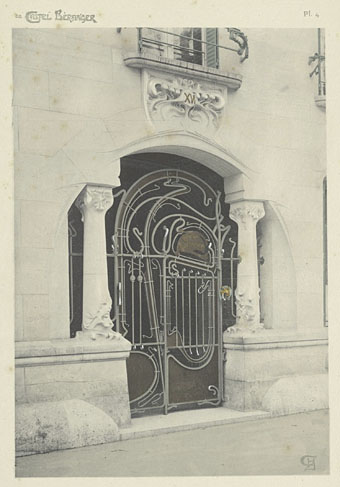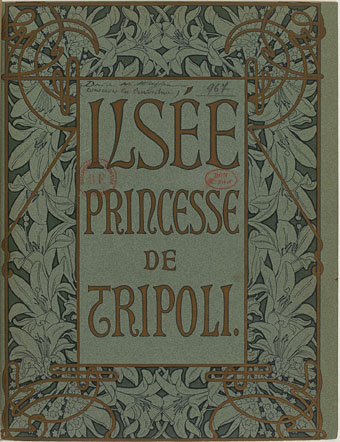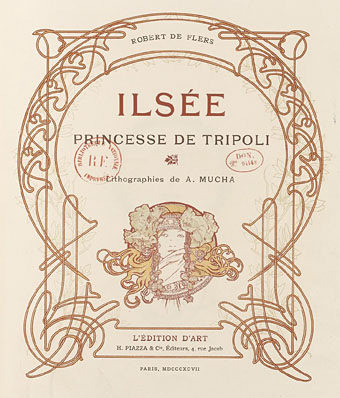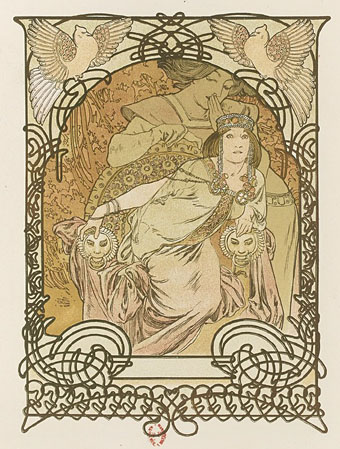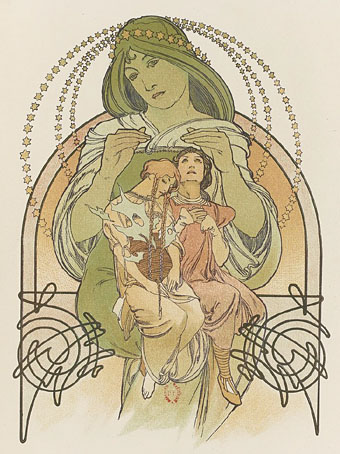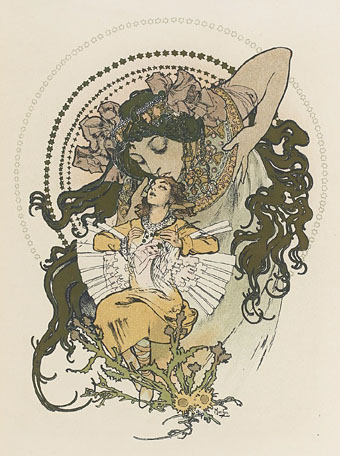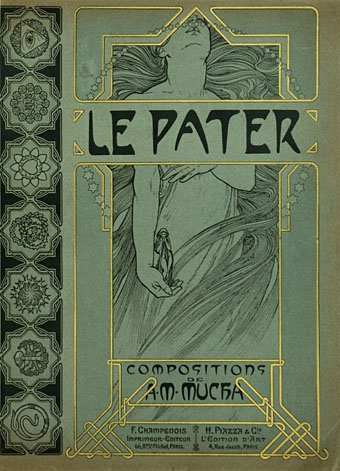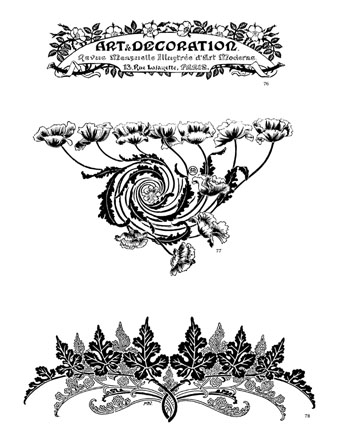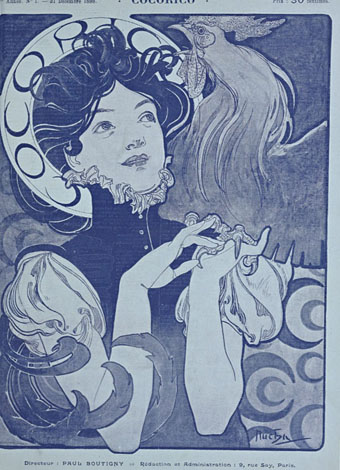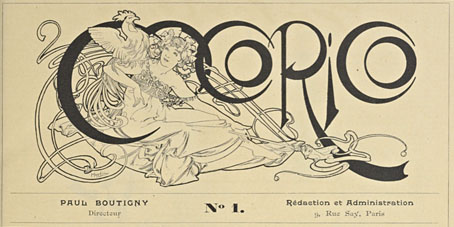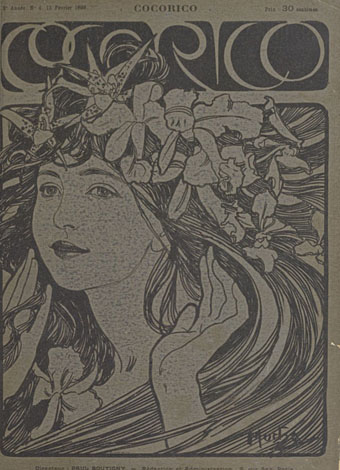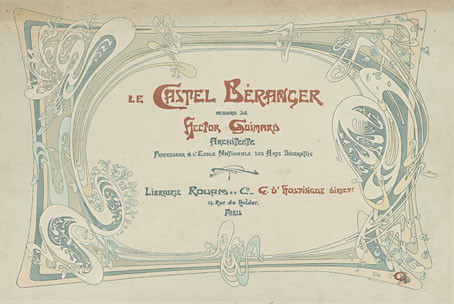
Art Nouveau is never far from these pages or from my own work, as has been the case this week when work-related research turned up this recent addition to the scanned books at the Internet Archive. Hector Guimard is best known today for his entrances to the Paris Metro not all of which survived the ravages of the 20th century. His designs for the Castel Béranger, an apartment block in Paris, slightly precede the Metro commission, and were intended by Guimard as a showcase for his own development of the Art Nouveau style.
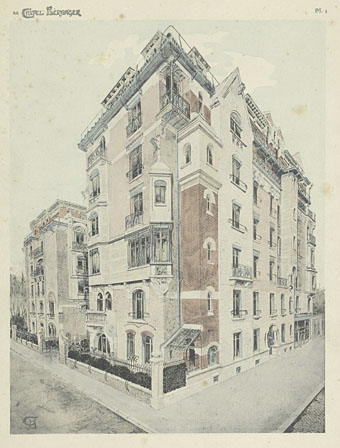
Like Frank Lloyd Wright, Guimard attended to every detail of the building’s construction and interior design, furniture included, and that’s what you have here, a book length guide to the building inside and out. The asymmetrical wrought-iron gate is a familiar sight from studies of Art Nouveau but other views of the building are less common. Compared to Alphonse Mucha’s control and Victor Horta’s sinuous curves, Guimard’s decoration can appear undisciplined but the wildness also makes it seem in advance of its time. Some of the wallpaper patterns for the Castel Béranger contain shapes that wouldn’t be seen again in a design context until the psychedelic posters of the 1960s. Guimard believed he was designing for the future but didn’t live to see the world that could make use of such stylistic delirium.
